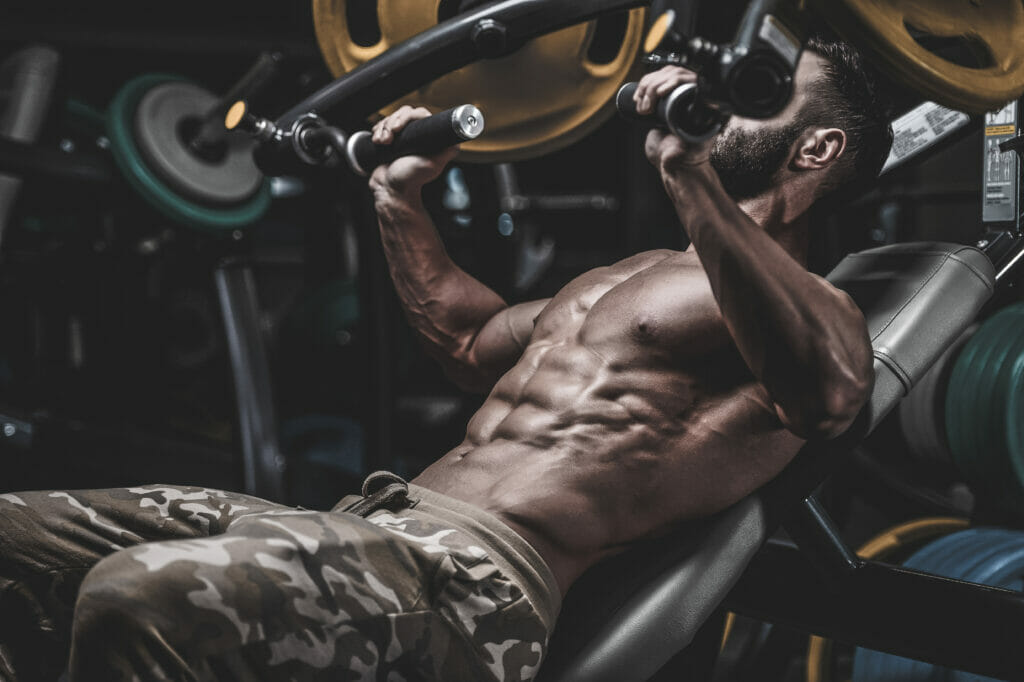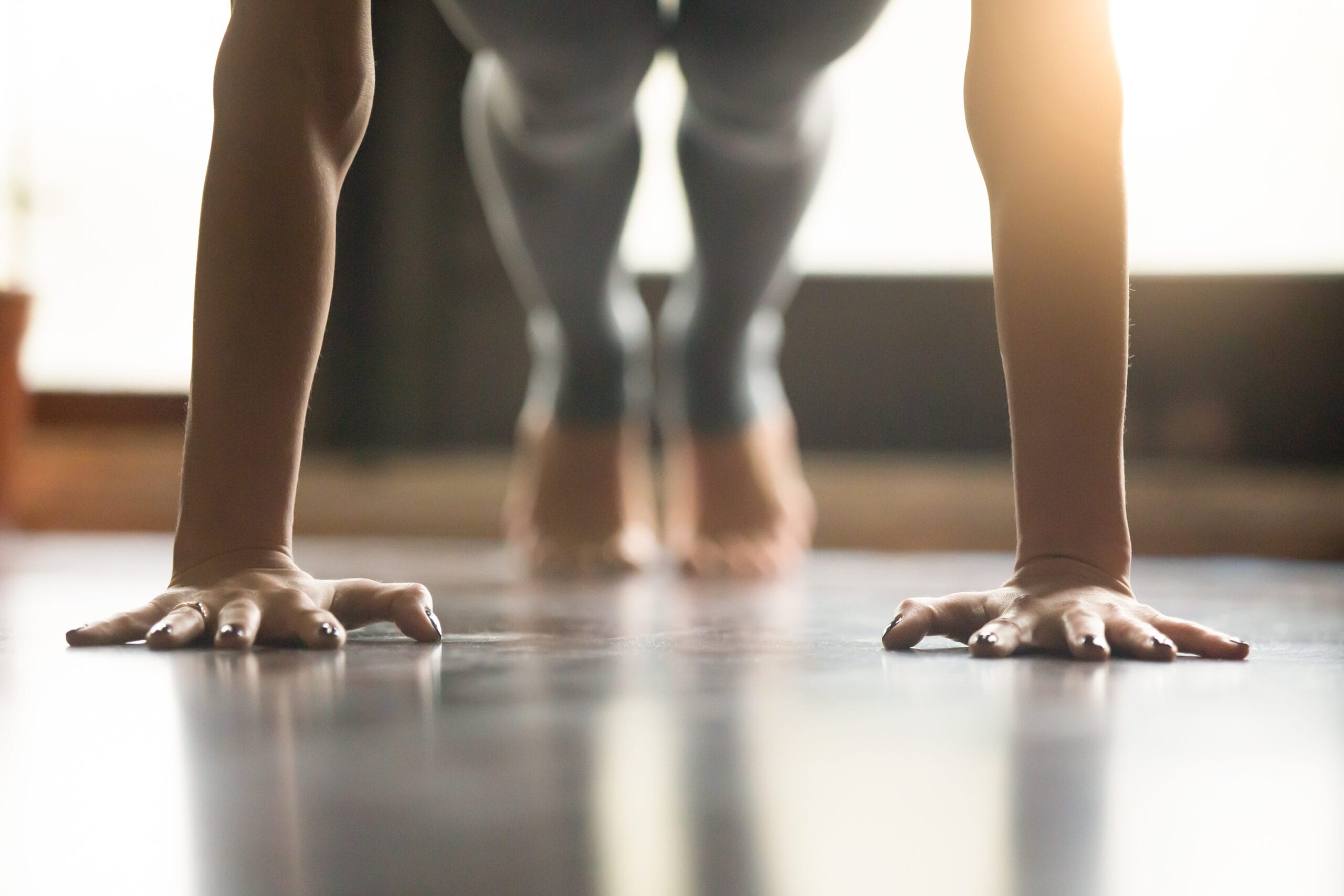
The incline bench press is a staple pec strengthening exercise for a lot of us and it’s easily one of the most popular chest moves out there.
Yup, I would argue the incline press is second only to the beloved flat bench press – don’t believe me, go to a public gym on a Monday… good luck finding a bench.
Anyway, for such a popular exercise, there seems to be a lot of confusion about what angle we should be setting our bench at to perform this exercise correctly.
If we’re trying to target our upper pecs, doesn’t it make sense that the higher the bench angle is, the more that part of the muscle will be targeted?
Nope.
I’m feeling generous today folks, so I’m not gonna make you read this whole article if you don’t want to – the short answer is that the best angle for incline bench press is somewhere between 30 – 45°.
And this isn’t my personal opinion, it’s based on science.
But if you’re interested in the longer story, keep reading.
What Angle Is Really Best For Incline Bench Press?
There’s no getting around it, incline bench press is hard.
I’ve had a love/hate relationship with this exercise really ever since I started lifting weights back in high school – I did it because I could feel it working my chest, but I didn’t like that I couldn’t lift nearly as much as I could on flat bench.
Plus, especially as I got older, it wasn’t always the most comfortable exercise on my shoulders.
Shoulder pain during this move is very common and it’s usually caused by something called impingement, but that’s a story for another day (if you’re dealing with this, check out this article I wrote about the subject for more info).
Anyway, the theory behind incline bench press is that we can adjust the angle of the bench to better target the upper portion of our chest.
So, we should probably start with a really quick anatomy lesson.
A Really Quick Anatomy Lesson
Our main chest muscles, or pec majors, are often described as consisting of 2 sections: the clavicular head and the sternocostal head.
The sternocostal head is really the meat of the muscle, making up the majority of the pec major and the clavicular head is the smaller section that comes up to meet the anterior delt.
And even though the clavicular head is the smaller portion, a lot of us still like the idea of bulking it up – you know, to try and get a little of that shelf action Arnold was known for.
Well, putting vanity aside, incline bench press can be a great way to build overall strength too… but back to anatomy.
The clavicular head and the anterior delt come together in the front of our shoulder, which is why so many pressing exercises work both of these muscles at the same time.
And we have to be careful with incline benching because this is one of those exercise that can easily turn into a shoulder exercise.
There’s nothing wrong with working the delts, most of us want strong shoulders too, but incline bench is supposed to be a chest exercise, so the goal is to hit the pecs as much as possible.
Now there are several different ways to go about performing an incline bench press.
Not only can we change the angle of the bench, but we can also choose the type of resistance we use.
Incline bench can be performed with dumbbells, a barbell, resistance bands, a Smith machine, a functional trainer, and what ever other form of resistance you can find.
And even though the type of resistance changes, the role the bench’s angle of incline plays shouldn’t really change – meaning the optimal angle should be the same for all these variations.
Speaking of which, what does the research have to say about incline bench angles?
A Little Research To Consider
There have been various studies conducted regarding this topic, so we actually do have some legit scientific info to look at when trying to find a reasonable answer.
When you’re looking at a question of how muscles are contracting, the studies are likely going to use electromyography (EMG).
Using EMG (skin or muscle insertion), the researchers can get a representation of how hard different muscles are working in different scenarios and so on.
Now different groups have performed different studies to try and see how the pecs and surrounding muscles activate while performing incline bench at differing angles and their methods and results do vary some.
In one study, the researchers found that performing incline bench at 44° offered the most significant increase in activation of the clavicular head of pec major, while an angle of 28° made little difference when compared to a flat bench.
Another study comparing similar muscle activation at different angles (-15, 0, 30, and 45 deg) found little difference in total pec contraction at these different angles, but found that at certain periods of the exercise, the upper pecs were working more at the 30° and 45° angles.
I know, that one’s a little more confusing.
In that study, they broke each contraction into different phases during the movement – so the increased upper pec involvement was only present for certain phases of the incline bench press.
Interestingly, they also found that the lower pecs were more involved in the decline position than in the incline position… so maybe decline bench isn’t a waste of time after all.
The last study I want to mention makes a more compelling case.
In this one, they looked at the activation of the different parts of the pec major, anterior delt, and triceps at various incline bench angles.
They found that an angle of 30° produced the highest EMG activity for the upper pecs and that the anterior delt was most active at 60° (the highest angle they tested).
They also went as far to say that any angle over 45° is basically targeting the delts over the pecs.
Now I’m sure there are more studies out there, but these 3 here, especially when combined, make a pretty good case that we should be doing incline bench at angles between 30 – 45º.
It’s also worth keeping in mind that the participants and methods for each study were different, but I do think these studies offer a pretty good case.
Final Thoughts
Ok, based on what we’ve gone over so far – if you’re trying to target your upper pecs (the clavicular head), you should be doing your incline bench at an angle somewhere between 30 – 45°.
As a physical therapist, this makes a lot of sense to me.
The pecs can assist with several different shoulder movements depending on the shoulder’s position, but one of their primary roles is horizontal adduction (the movement you do during a chest fly).
If you think about it, this movement is present during bench press, but as you start increasing the angle of the bench, it starts disappearing.
The higher that bench goes, the more vertical your shoulder orientation becomes, turning the shoulder movement more into flexion (going above ahead) than anything else.
And guess which muscles are most active during shoulder flexion… yup, the deltoids.
If you’ve ever tried incline bench at 60°, you know what I’m talking about – it damn near feels like a straight up shoulder press.
Now with regards to choosing between 30° or 45°, the research isn’t unanimous – some show that 30º is a little better, others have shown that 45° is superior.
Personally, I say why choose when you can use both.
If you have an adjustable bench, you can take advantage of both angles – use one setting for this week’s workout, use the other for next week and alternate as you see fit.
If you’re going to a gym and they only have a fixed bench, you might be out of luck – but I still bet they have an adjustable bench with the dumbbells you could use.
Personally, I tend to stay closer to the 30° because I feel like the flatter that bench is, the more I feel it in my pecs vs my delts.
But the research does show that 45° can be effective for hitting those upper pecs too.
Again, variety is the spice of life, so I say use both angles to keep your workouts fresh.
Alright, I think that about does it.
Now that we’ve put the issue of incline bench angle to rest, there’s only one thing left too do – now go out there and crush your chest day!


